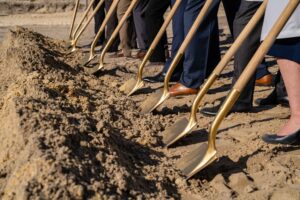Physical Therapy and Prostate Health: What’s the Connection?

Back to physical health resource hub
Men, how often do you think about your prostate? Do you really know your prostate or know any of the signs or symptoms indicating something could be amiss?
The prostate is a walnut-sized gland of the male reproduction system. It is located underneath your bladder and surrounds portions of the urethra (the tube that empties urine from the bladder). Due to its location, enlargement or inflammation of the prostate could slow or diminish control of urine flow.
Benign Prostatic Hyperplasia (BPH) is when the prostate starts to enlarge, pinching off the urethra leading to difficulty with urination. About 50% of men older than the age of 50 report urinary difficulties, and this can rise to as much as 70% in men over the age of 70. If you are experiencing any of the symptoms below, please see your primary care provider to rule out prostate dysfunction, including prostate cancer.
Common Signs of Prostate Dysfunction
- Weak or interrupted flow of urine
- Sudden and frequent urination (especially at night)
- Trouble starting the flow of urine
- Pain or burning while urinating (bladder infections)
- Pain in back, hips or pelvis with no explanation and no relief with changing positions
Prostate cancer is the most common type of cancer in men, followed by skin cancer, and the second leading cause of death in men. One out of every five men will be diagnosed with prostate cancer. With early detection, most men can expect a good prognosis. There are various treatment options for prostate cancer including surgery, radiation and chemotherapy. Physical therapy should also be a part of the treatment plan to help combat some of the side effects of cancer treatment.
Pelvic Therapy for Prostate Health
Common side effects from prostate cancer treatments include urine leakage, difficulty urinating, pelvic pain, sexual dysfunction, general fatigue and de-conditioning after cancer treatments. Pelvic floor physical therapists are here to assist with improving your quality of life following cancer interventions. Treatment sessions may include general strength and conditioning along with pelvic floor muscle exercises, use of biofeedback, manual therapy, electrical stimulation to retrain the pelvic floor muscles and behavior modifications to teach urinary control.


